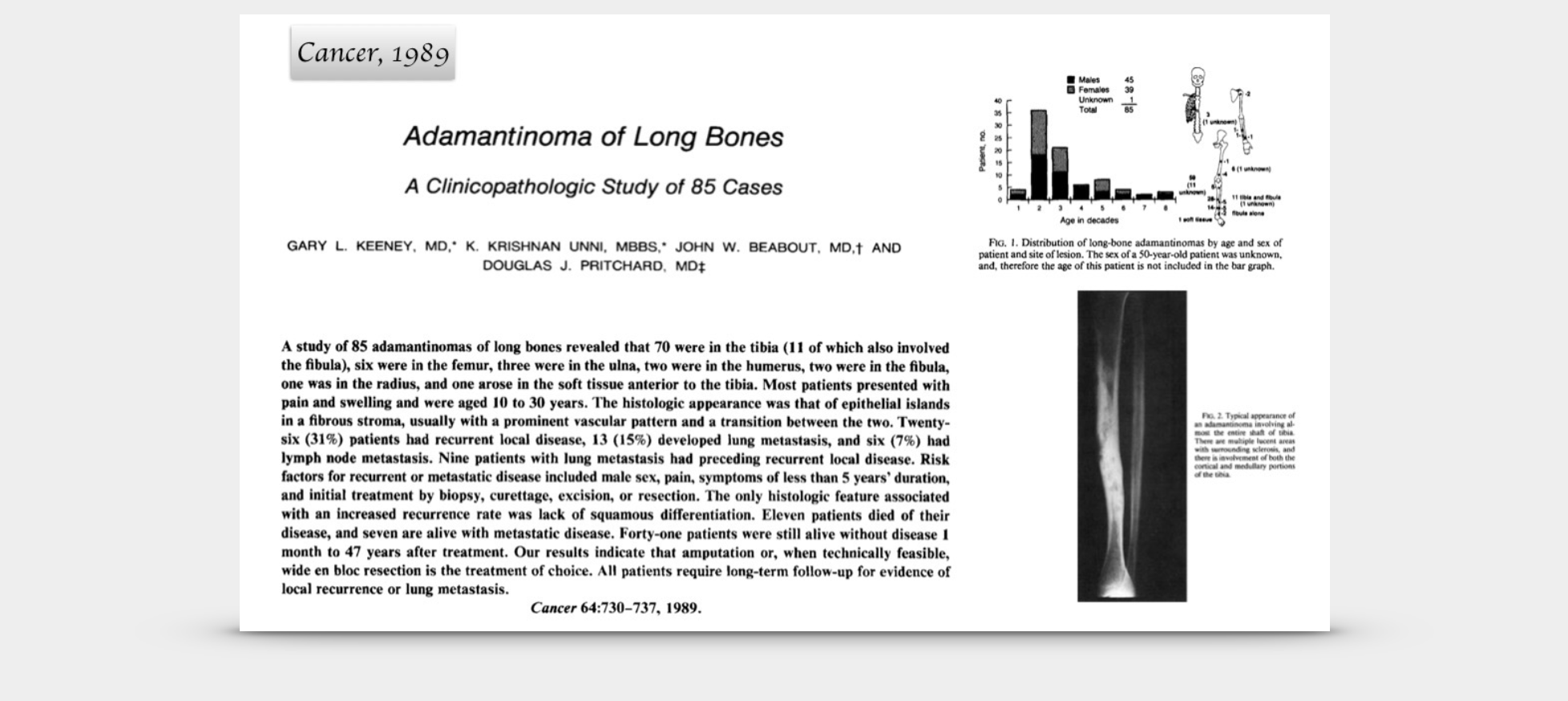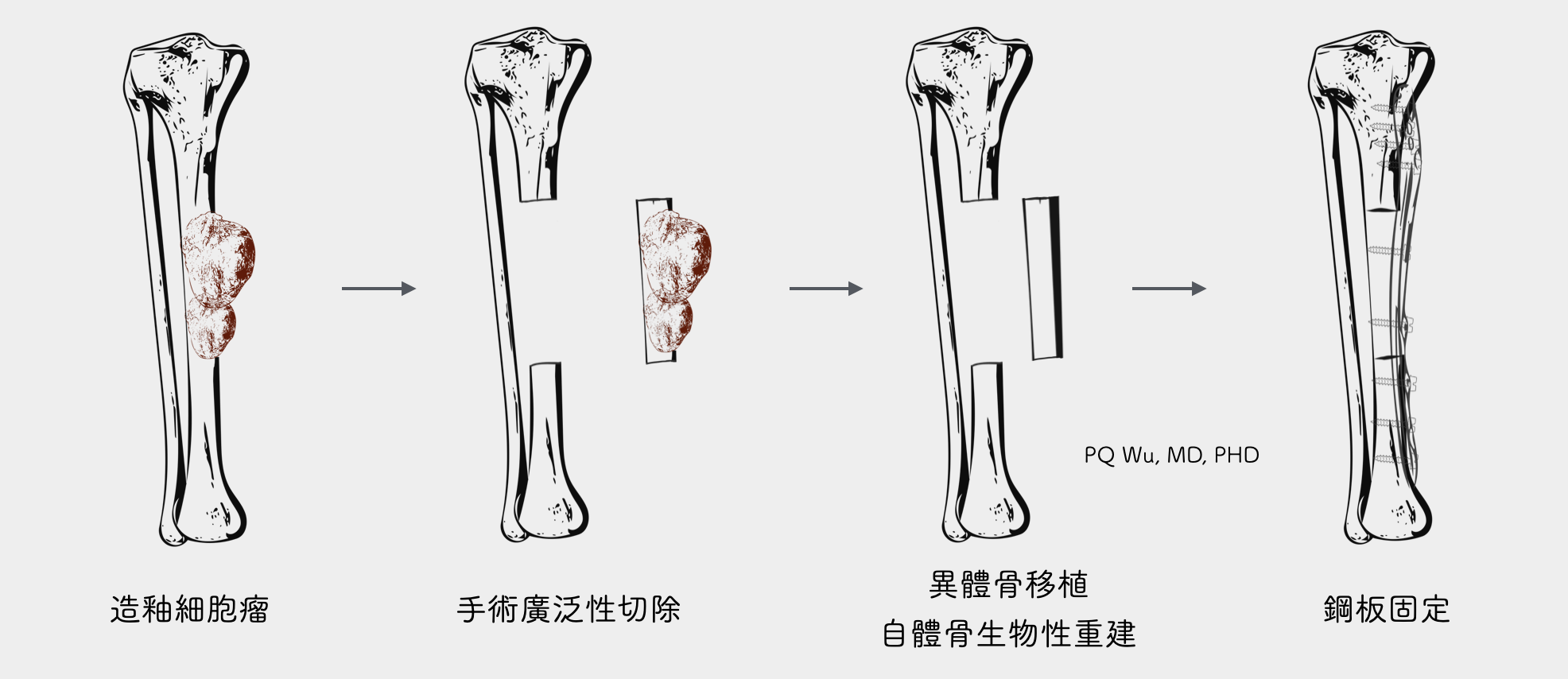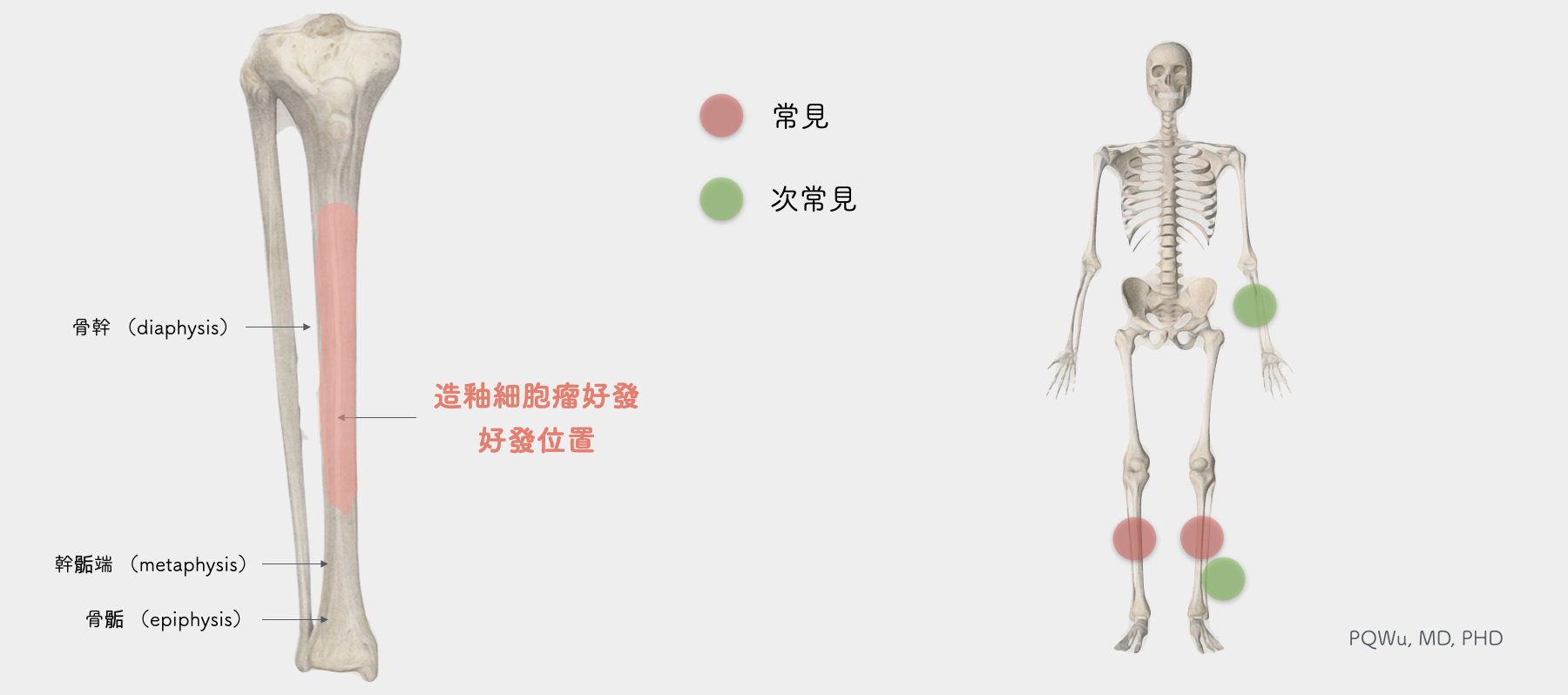Admantinoma of Long Bones is a rather rare malignant tumor. Compared with the general, malignant bone tumor, the biggest characteristic is that it grows slowly, and its malignancy is lower.
by PQ Wu
Chinese: 長骨造釉細胞瘤
English: Admantinoma of Long Bones
The origin of the name of Admantinoma is from its pathological findings. This tumor is similar to adamantinoma (ameloblastoma) in the mandibular bone, and thus pathologists call it Admantinoma of Long Bones.
Because adamantinoma of long bones grows more slowly, the symptoms are mostly 'hidden pain', which can last for years or even years before they are properly diagnosed. According to a 1989 study by Dr. Keeney GL of the Mayo Center in the United States, even one-third of patients had pain for more than five years before detection.

It is quite rare, taking only 0.5% of all malignant bone tumors. The Mayo Clinic in the United States published 85 case reports in 1989. At the therapeutical and Research Center of Musculoskeletal Tumor at Taipei Veterans General Hospital, it takes about two to three years to discover a patient like this. It is obviously rare!
Patients diagnosed with adamantinoma of long bones are mostly between the ages of 20 and 30. Men is more likely to occur than women.

More than 90% of adamantinoma of long bones occurs at the diaphysis. The remaining 10% occurs at fibula or forearms. In imaging, it is quite specific.
Multicystic osteolytic lesions can be seen under X-rays, and the structure was surrounded by expansile sclerosis. These characteristics are very similar to benign osteofibrous dysplasia and hard to distinguish clinically.
Compared to other malignant bone tumors with only a single chromosomal abnormality, adamantinoma of long bones occurs due to multiple karyotypic abnormalities, which include chromosomal abnormalities in the seventh, eighth, twelfth, 19th, and 21st chromosomes.
The tumor structure of adamantinoma of long bones, when touch, is more solid and elastic like a 'dry shellfish' in general, and some places will combine with necrosis and festering structure.
Microscopic observations reveal two different patterns (biphasic). These structures are similar to those commonly occurring at adamantinoma, or ameloblastoma, in jawbones. The first is spindle cells, and the second is epithelioid cells. We call it small epithelial islands in a fibrous stroma pathologically.

Inexplicably, in the general bone tissue tumors, there will be spindle cells, but adamantinoma of long bones can appear the epithelioid cells that are from the ectoderm and endoderm, a unique phenomenon. Part of the explanation is that since adamantinoma of long bones occurs mostly under the tibia's skin, external forces may cause epidermal cells to move into the tumor.
Also, because of the presence of these two different types of cells and the fact that pre-operative biopsies often cannot obtain the entire cell, metastatic carcinoma or fibrous dysplasia are sometimes misdiagnosed. However, since bone metastasis of prevalent cancers does not occur easily in the middle of the tibia and the age of cancer patients is older, it is not difficult to distinguish from adamantinoma of long bones in clinical diagnosis.
Compared with other malignant bone tumors that metastasize to other organs through blood, adamantinoma of long bones can metastasize far away, not only through blood but also the lymphatic system. Fortunately, most adamantinoma of long bones only invade local bone structures and are not likely to have distal metastasis. According to the literature reports, only about 20% of cases will have distal metastasis in the more advanced disease course, which is quite low compared to other malignant bone tumors!
No, chemotherapy is not required.
Because of its low malignancy, adamantinoma of long bones is not like other malignant bone tumors that require chemotherapy. The most important treatment is to remove the tumor widely and with subsequent limb reconstruction.




